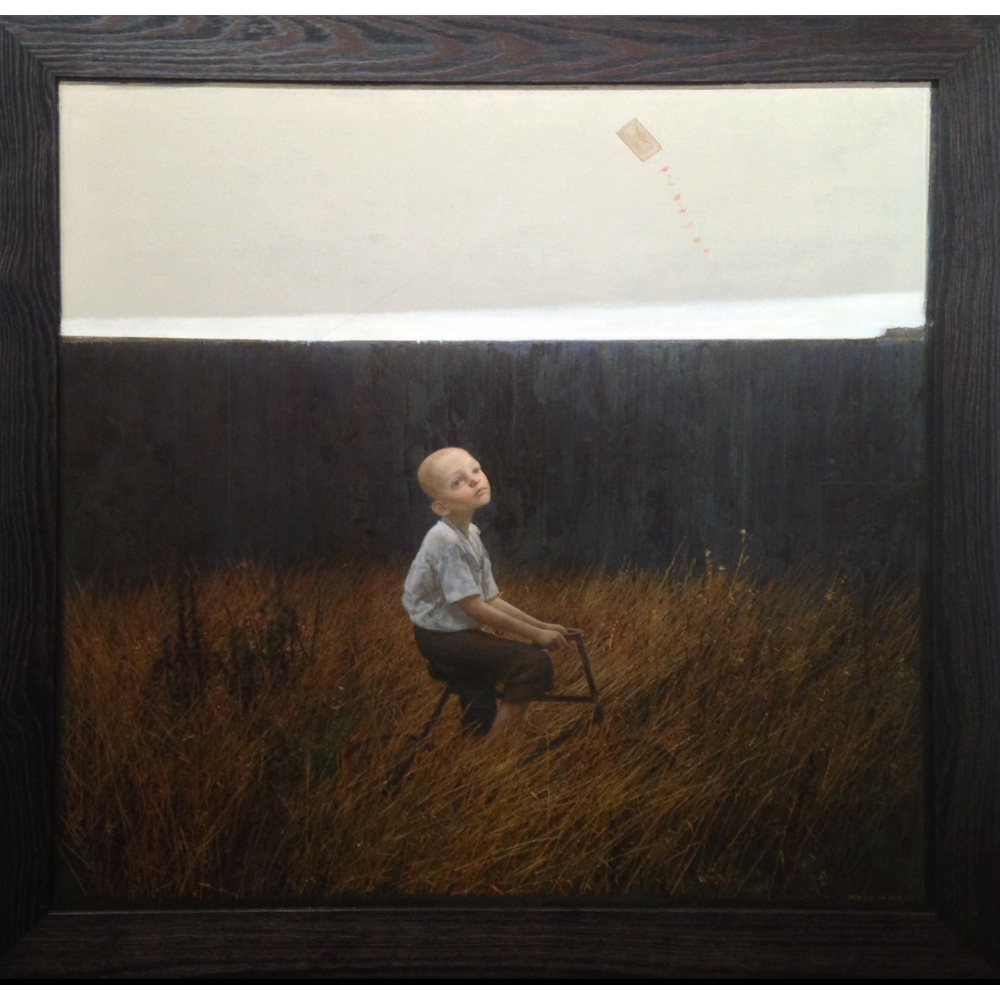Artwork Description
Igor Melnikov – Kite
Dimensions: 37.75 x 37.25″ framed / 32.25 x 32″ unframed
Year: 2014
Medium: acrylic on panel
Igor Melnikov’s work, Kite, plays with both a feeling of emotional and spatial ambivalence; the viewer is encouraged to contend with the child’s expressive ambiguity as well as the subtle disconnect between background and figure. While the child’s simple clothing suggests a sense of belonging within his natural surroundings, his placement in the center of the work and limited interactions with the encompassing land suggests physical temporality or Melnivok’s authority as artist and creator. The narrative of the work remains elusive—allowing viewers to employ both their imagination and interpretive license.
Russian born artist, Igor Melnikov, upends traditional associations with portraiture through his haunting and intrinsically psychological paintings of emotionally ambiguous children and within his subtle natural explorations. Rather than focusing on the individual identity of those within his works, Melnikov instead looks to viewers as dynamic participants in the interpretation of his paintings, allowing them to determine whether the children might burst into tears or laughter, based on personal experience, thought, and upbringing. Melnikov is fascinated with the simultaneity of happiness and suffering, which he believes function as an expression of the ‘complexity of the human personality’ and exist as a component of the ‘meaning of being’. Melnikov’s paintings are collage-like, yet not in the traditional, material sense of the process—instead layering his own psychological explorations onto his attempted understandings of the human condition and expression. While his muted color palettes might at first appear to be reductive, they instead focus viewers’ attention on the figures within the work and encourage slow and thorough readings of the detailing that remains visually available. While people and the human condition remain the primary subjects within his paintings, Melnikov also expresses an artistic concern for the natural world, whether expressed in landscape surroundings or in its more material and familiar manifestations, seen in the figure’s clothing and simple possessions.
by Keira Seidenberg, Art History/Gender Studies student, McGill University

